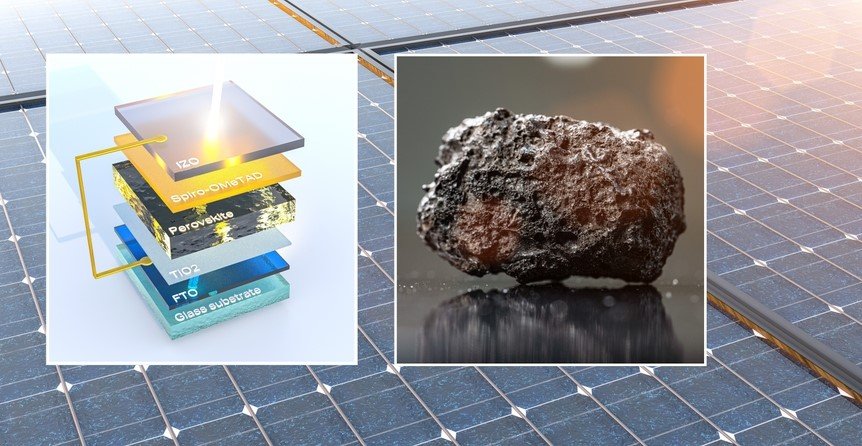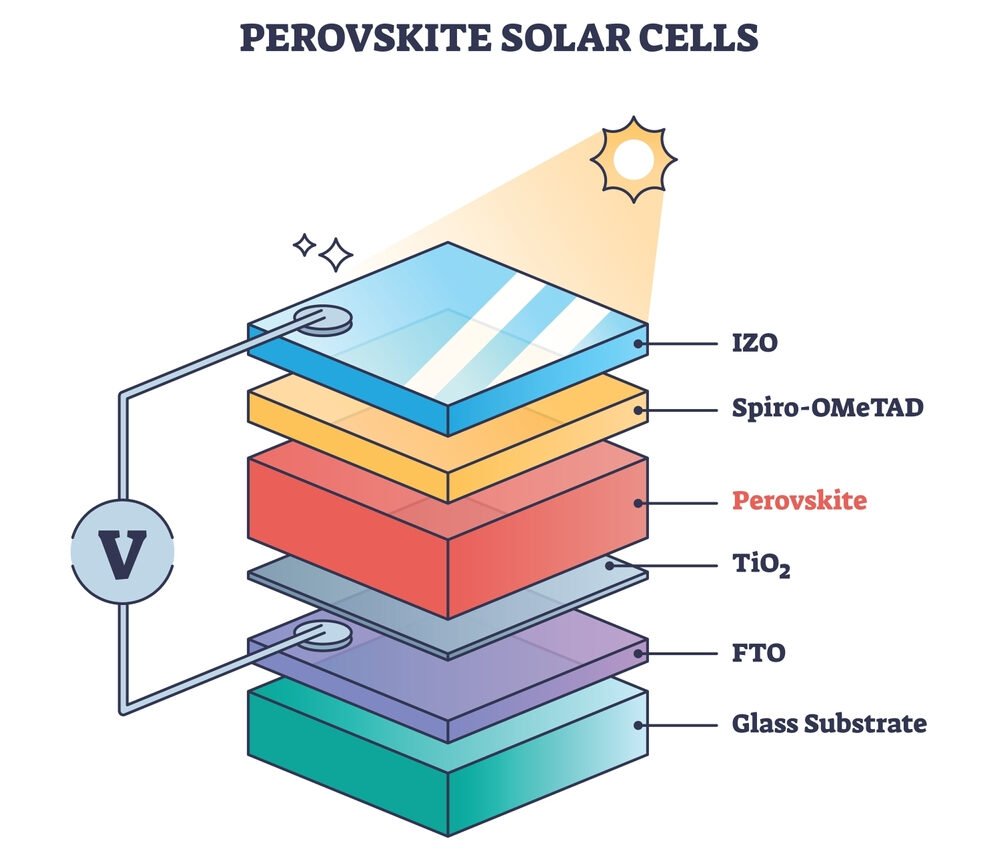Solar energy is the world’s most rapidly growing energy source. In 2022, solar PV power generation expanded by a whopping 270 TWh, which is 27% higher than it was in 2021. In 2023, solar has reportedly added the largest amount of capacity to the grid, with approximately 50% of the growing capacity coming from solar.
The global average solar energy capacity is 852 GW (gigawatts). This rate of growth has been rising each year for the last 10 years, which is 10 times higher than it was in 2011.
Recently, there have been many technological advancements in solar cells, which include — Perovskite Tandem Solar Cells, Printable Solar Cells, Sun tracking Solar Panels, Night working Solar Power Plants.
Also, the New PV Cell Technologies such as — HJT (Heterojunction cells), TOPCon (Tunnel Oxide Passivated Contact), Gapless Cells (High-density cell construction), PERC (Passivated Emitter Rear Cells), Multi Busbar (Multi ribbon), Microwire Busbars, and Split cells (Half-cut and 1/3-cut cells).
What are Perovskite Solar Cells?

The Perovskite solar cells (PSCs) are a specific type of solar cell that consists of a perovskite-structured compound, with the primary component of which is a hybrid organic–inorganic lead or tin halide-based material as a photovoltaic electrically charged layer.
Perovskite is a calcium titanium oxide mineral, named after Russian mineralogist Lev Perovski (1792–1856). The mineral is composed of calcium titanate (CaTiO3) which was first discovered by German mineralogist Gustav Rose in 1839 in the Ural Mountains of Russia.
Perovskite solar cells are thin-film solar cells which are made up of perovskite light-absorption layers and parallel layers that collect positive and negative charges on the perovskite’s opposite sides when light is absorbed. Hole-transport layer (HTL) is one of the layers, used to extract positive charges.
However, Perovskites can be made without HTL also, but their efficiency is reduced compared to the standard perovskite solar cell module structures.
Also, Perovskite solar cells can be made solution-processed, involving methods like — Inkjet printing and Slot die coating. Under laboratory settings, perovskite cells are made using the application of chemicals by spin-coating, spraying or painting them directly onto a substrate.
Perovskite solar cells vs Crystalline silicon solar cells: Which is better?
Perovskite solar cells are much better than crystalline silicon solar cells due to their good light absorption, high efficiency and low cost. Also, they can further be tuned to use in solar spectrum regions that are completely not accessible to silicon photovoltaics, as the Perovskite holds better tolerance for defects and functions well with impure materials and slight imperfections.
Crystalline silicon solar cell technology features an Al-BSF structure, that uses a monocrystalline c-Si (Mono c-Si) or polycrystalline c-Si (Poly c-Si) as the absorption layer.
Perovskite solar cells have a unique crystallographic structure and generic form ABX3 crystal structure, which is also known as the perovskite structure or active light-harvesting layer.
How Do Perovskite Solar Cells Work?

Perovskite solar cells works by the means of photovoltaic effect where the cells of perovskite layer absorbs sunlight and generates electricity in a step-by-step process as explained below:
- A Perovskite thin material — usually a hybrid organic-inorganic lead or tin halide-based compound is used as the light-absorbing layer.
- Perovskite layer absorbs the sunlight.
- The photon energies are used to excite.
- Active layer inserted between ultrathin carrier transport materials.
- Materials such as — Hole transport layer (HTL) and Electron transport layer (ETL) are included.
- Free Electrons and Holes are injected into ETL and HTL.
- Perovskite solar cell structure’s anode and cathode are formed by Fluorine-doped tin oxide (FTO) — typically glass and metal.
Perovskite solar cells are different from the traditional solar cells, with progressing efficiency 100 to 1,000 times faster than on CdTe.
Advantages of Perovskite Solar Cells
Here are a few pros of Perovskite Solar Cells compared to traditional solar cells:
- Different Material made at room temperature
- Better light absorption than crystalline silicon
- 10 times thinner than silicon solar cells, capturing the same amount of light.
- Not expensive
- No multistep process
- Better defect tolerance
- Cheaper production than traditional silicon solar cells.
- Thin-film photovoltaic technology manufactured with absorber layers of 0.2–0.4 μm
- It exceeds photon energy utilization by 70% with the potential to be increased beyond this.
High-Efficiency
According to the reports, Perovskite solar cells achieved rapidly increasing efficiency from 3% in 2009 to more than 25% today.
Perovskite solar cells’ power conversion efficiency (PCE) in laboratory settings has risen very quickly from 3.9% to 27%. In 2021, perovskite solar cells set their new efficiency record at 25.8% by building an interlayer in between electron-transporting and perovskite layers.
However, the efficiency of inverted perovskite solar cells still failed to increase up to 25% of silicon solar cells. Stable perovskite solar cells with 24% exceeding efficiency tend to maintain 87% more than the original power conversion efficiency. Also, for more than 500 Hours under 50% temperature and humidity.
As of August 2023, perovskite solar cells (PSCs) have a market-leading efficiency of 26.4% indicating its technology can be commercialized and installed on a large scale. However, you can also learn more about solar panel efficiency.
Low Manufacturing Costs
Perovskite solar cells cost up to $0.17 per watt whereas other types of photovoltaics such as regular thin-film photovoltaics, cost around $0.42 to $0.60 per watt, and the GaAs technologies cost up to $50 per watt.
However, the cost of Perovskite solar cells in future can further be reduced to $0.10.
The levelized cost of electricity (LCOE) of perovskite PV is expected to be 3.5–4.9 US cents/kWh within a 15-20 year lifetime, which is much cheaper than traditional fossil-fuel-based energy.
Also, to assist in depositing perovskite thin films, solution processing is the most commonly used technique using a perovskite base solution made up of lead halide and organic halide. Further, this solution is deposited by several coating methods, such as — blade coating, spin coating, spraying, and slot-die coating
Therefore, perovskite solar cell solution processing helps lower the cost of production by processing at low temperatures (100 degrees centigrade), whereas silicon is processed at high temperatures (900 degrees centigrade).
Solution-processed solar cells appeal due to their relatively affordable manufacturing cost, favourable compatibility and the adaptable substrates that they use with large-scale fabrication ease.
Versatility
Perovskite solar cells (PSCs) are lightweight, flexible, and semi-transparent having 29.4 W g−1 PPW (power-per-weight) reporting as the highest value of a lightweight solar cell technology device
PSCs as semitransparent solar cells functions with an excellent PV performance with average visible transparency (AVT) between 20- 30% reaching up to 8–12% PCEs.
Low-temperature coefficient
There is a relatively low-temperature coefficient of Perovskite solar cells, defining that they can maintain a stable power output even in extremely hot weather conditions. It is possible because of the decreased temperature coefficient, which leads to a slight reduction in power conversion efficiency at high temperatures.
Disadvantages of Perovskite Solar Cells
Here are a few cons of Perovskite Solar Cells:
- Low Stability because of exposure to UV radiation, oxygen, and moisture
- Degrades quickly in harsh environments
- Toxic materials used in perovskite solar cells production
- Perovskite crystal defects prevent the separation of positive and negative charges
- The crystal structure’s polarons movement causes perovskite cells temperature fluctuations
- Poor Wear and tear due to heat, light, moisture, and oxygen
- Perovskite solar cells’ low power conversion efficiency
Stability Issues
Perovskite solar cells (PSCs) face several stability issues environmentally and in its longevity as they are highly sensitive to light, moisture, oxygen, UV rays, and heat. Encapsulation methods such as — Flexible moisture blocked and temperature controlled system can be used to address these factors.
One of the most severe stability issue of Perovskite solar cells is that it undergoes degradation during multiple junctions at the device level. However, it is due to the unsuitable exposure to high temperature, moisture, UV ray light, and the outside air.
Use Of Toxic Materials
Most of the perovskite solar cells (PSCs) use toxic materials containing lead, which is a toxicant. It could be consisting of genotoxic, carcinogenic, nephrotoxic, neurotoxic, immunotoxic, and reproductive toxic
However, some efficient PSCs are made up of lead halide salts (PbI2 and PbBr2) which are highly toxic. Also, the Lead iodide (PbI2) is released during the decomposition of Pb-based PSCs when they begin to degrade.
Here are a few innovative things being done to address the issue of using toxic materials in perovskite solar cells manufacturing:
- Adding transparent phosphate salt
- Removing the lead hazard
- Coming up with lead-absorbing tapes
- Preventing lead being released from damaged perovskite solar cells
- Replacing lead with safe titanium
- Developing eco-friendly PVSCs using device fabrication process with green solvents.
Developments in Perovskite Solar Cells Technology
Surprisingly, we could observe many recent breakthroughs of Perovskite solar cells Technology. One of it is that the team of UNIST researchers and Korea University have recently made groundbreaking technological advances by enhancing and improving the perovskite solar cells stability and efficiency.
Also, the research team was successful in being able to develop easily reproducible perovskite solar cells with 16.8% power-conversion efficiency, which is definitely known as the best result manufactured till now without human interference.
Tandem solar cells combine perovskite and silicon cells, making them much more efficient compared to single-material cells. The perovskite layer captures short light wavelengths that include — visible light and ultraviolet rays. Meanwhile, the silicon layer absorbs long light wavelengths like infrared rays. This process, allows both materials to function together to boost efficiency.
According to previous reports of September 2021, perovskite solar panels were expected to be commercially available within 3–5 years. But we are in the year 2024, and we couldn’t see it in the market, as others state that it takes a few years or even decades for tandem cells to be available commercially.
Future of Perovskite Solar Cells Technology
{Video Source: Future Galaxy}
The perovskite solar cells’ technology holds certain future potentials, of which efficiency plays a major role. As of now, Perovskite solar cell’s efficiency of 29.15% is great, but it is capable enough to reach 38% in the future. According to the theoretical calculation, the maximum efficiency for perovskite solar cells is about 47%.
Also, Perovskite solar cells have proved their performance by improving in many ways by outperforming and becoming ready as the alternative to traditional silicon-based solar cells.
One of the most impressive points is the Lifespan of Perovskite Solar Cells Technology, the reports, and study state the first developed perovskite solar cell has a lifetime of 30 years. Also, Perovskite solar cells come with the possibility and advantage of lower production costs.
Perovskite Solar cell technology helps the environment by lowering carbon footprint, reducing the energy payback period, better sustainable manufacturing, enhancing energy conversion, and improving efficient power conversion. Besides these, there is a lot more to know about the carbon footprint of solar panels.
Ray is an avid reader and writer with over 25 years of experience serving various domestic and multinational private and public energy companies in the USA.

